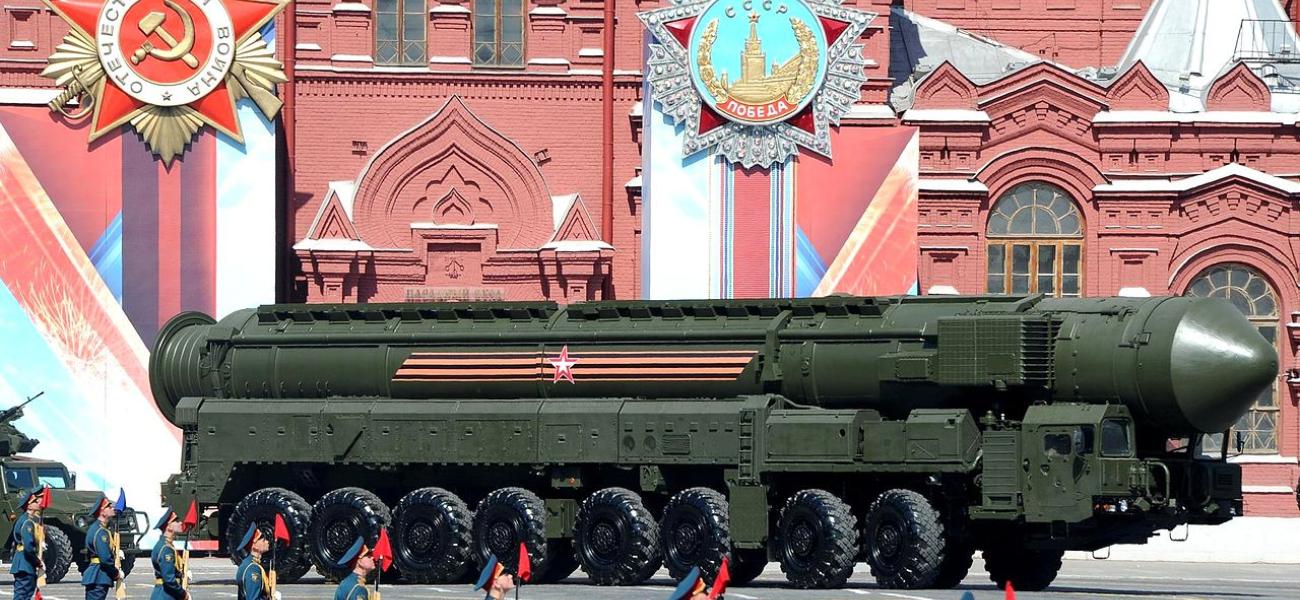
Destructive distillation of arms
This is a summary of an article originally published by the Russian Council on International Affairs.
The author, Head of the Center for International Security at the Institute of World Economy and International Relations (IMEMO) of the Russian Academy of Sciences, writes:
-
“In reality, this situation is not the most dangerous yet. In October 1962, during those 13 days of the Caribbean [Cuban missile] crisis, we were much closer to a nuclear war.”
-
“We have many commentators, politicians and even officials freely improvising on this topic [conditions for Russia’s use of nuclear weapons in the Ukraine conflict]. … [T]he people who are authorized to make statements on these issues—and this is the president, the foreign minister and the defense minister—they all say that Russia is not considering the possibility of using nuclear weapons. And neither does our military doctrine envisage the use of nuclear weapons in response to the transfer of Leopard or Abrams tanks to Ukraine. … [T]his document spells out only one reason for the use of nuclear weapons, excluding a response to a nuclear attack or an attack with use of other weapons of mass destruction. That reason is an aggression [against Russia] with the use of conventional weapons which threatens the very existence of the Russian state.”
-
When asked to comment on the possibility nuclear weapons use in response to Ukrainian armed forces’ recapturing territories “Russia considers its own now”: “[I]n my opinion, this doesn’t really qualify as a reason for a nuclear war because the new subjects of the Russian Federation do not constitute a guarantor of the very existence of the Russian Federation. … [W]hat can really cause an escalation is the transfer of Western long-range missiles to Ukraine … If these missiles strike deep into Russian territory … then some of them may fly into residential areas. And that is what can give a completely different quality to the situation, when the use of nuclear weapons will be considered in all seriousness.”
-
When asked where the real red lines are: “First, NATO countries are not directly involved in the conflict, although they supply weapons, and Russia does not strike at NATO countries. Secondly, NATO countries do not supply long-range missiles for strikes deep into the territory of the Russian Federation, while Russia does not use weapons of mass destruction. These two conditions have not yet been formally fixed anywhere, but are tacitly observed. These are the very ‘red lines’ that are really dangerous to break.”
-
“Both in Russia and in the West, the very phrase ‘Minsk-3’ is perceived by many as derogatory, but I have a different view on this. … And then, if a ceasefire is established and is reliably controlled, it will be possible to start peace negotiations. And to discuss all the painful issues—the status of Ukraine, the status of territories, etc.”
Read the full article at Russian Council on International Affairs.
Alexey Arbatov
Head of the Center for International Security at the Institute of World Economy and International Relations (IMEMO) of the Russian Academy of Sciences.
The opinions expressed herein are solely those of the author. Photo shared in the public domain.
